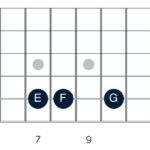Guitar Center is often the first stop for musicians looking for gear, new or used. When it comes to Guitar Center Used Drums, the selection can be enticing, offering potential deals that are hard to find elsewhere. However, the experience of buying and selling used drums at Guitar Center isn’t always straightforward. There are nuances in their pricing strategy that can lead to both incredible bargains and missed opportunities. Understanding these dynamics can be the key to scoring your dream kit or snare at a price that makes sense.
One of the most talked-about aspects of guitar center used drums is their approach to pricing. It often boils down to a simple formula: buy low, sell low. This can be a double-edged sword. Imagine bringing in a vintage snare drum, perhaps a gem you need to part with. Guitar Center’s standard practice might lead them to offer you a minimal amount, just enough to quickly turn it around for a small profit. While this “buy low, sell low” strategy can result in attractively priced gear for the final buyer, it doesn’t necessarily benefit the original seller, and arguably, it doesn’t maximize Guitar Center’s potential earnings either.
Consider this scenario: you spot a pristine used snare drum at Guitar Center priced at an unbelievably low $79. It’s a steal, and you grab it instantly. As the original article’s author experienced, even store staff might acknowledge that the drum could easily be priced much higher, perhaps closer to $179 or even more, reflecting its true market value. The low price is a direct result of Guitar Center’s low initial investment. While this situation creates a win for savvy buyers who happen to be in the right place at the right time, it raises questions about fairness and optimal pricing strategies. A more equitable approach, where the original seller receives a fairer offer and Guitar Center prices the item competitively but reasonably, could potentially benefit all parties involved in the long run.
On the flip side, the “buy high, sell high” scenario at Guitar Center presents its own set of challenges, especially with guitar center used drums. When Guitar Center acquires used gear at a higher cost, they naturally need to price it higher to maintain their profit margins. However, this can often lead to used drums sitting on the sales floor for extended periods. Overpriced used gear becomes stagnant inventory, occupying valuable space that could be used for more saleable items. Eventually, price reductions become necessary, sometimes leading to minimal profit or even losses on the initial investment. This situation highlights an inefficiency in their used gear handling process.
The core issue often stems from a lack of specialized expertise at the store level. While Guitar Center employees are generally knowledgeable about new gear, assessing the value of used and vintage guitar center used drums requires a different skillset. It doesn’t necessarily demand vintage drum gurus at every counter, but it does necessitate empowering staff to make informed decisions when acquiring used gear. Granting them the authority to negotiate smarter deals and having access to a resource for specialized valuations would be crucial improvements.
A practical solution could be the creation of a centralized used gear department or a network of consultants specializing in guitar center used drums and other instruments. These experts could be on-call resources for local Guitar Center stores, providing guidance on pricing and acquisition strategies. Imagine a system where store employees could quickly consult with a drum expert when unsure about the value of a used kit or a rare snare drum. This would enable more accurate and competitive pricing, benefiting both sellers, buyers, and Guitar Center itself. Such consultants could even be experienced collectors or local drum authorities, working part-time to provide their expertise.
In conclusion, while guitar center used drums offer a valuable avenue for musicians to buy and sell used gear, their current pricing model has inherent limitations. By addressing the need for specialized expertise in used gear valuation and empowering their staff to make smarter acquisition decisions, Guitar Center could unlock the full potential of their used drum market. This would lead to fairer deals for sellers, more competitive prices for buyers, and a more efficient and profitable used gear operation for Guitar Center. The solutions are available; it’s a matter of implementation and a willingness to adapt their current strategies.

